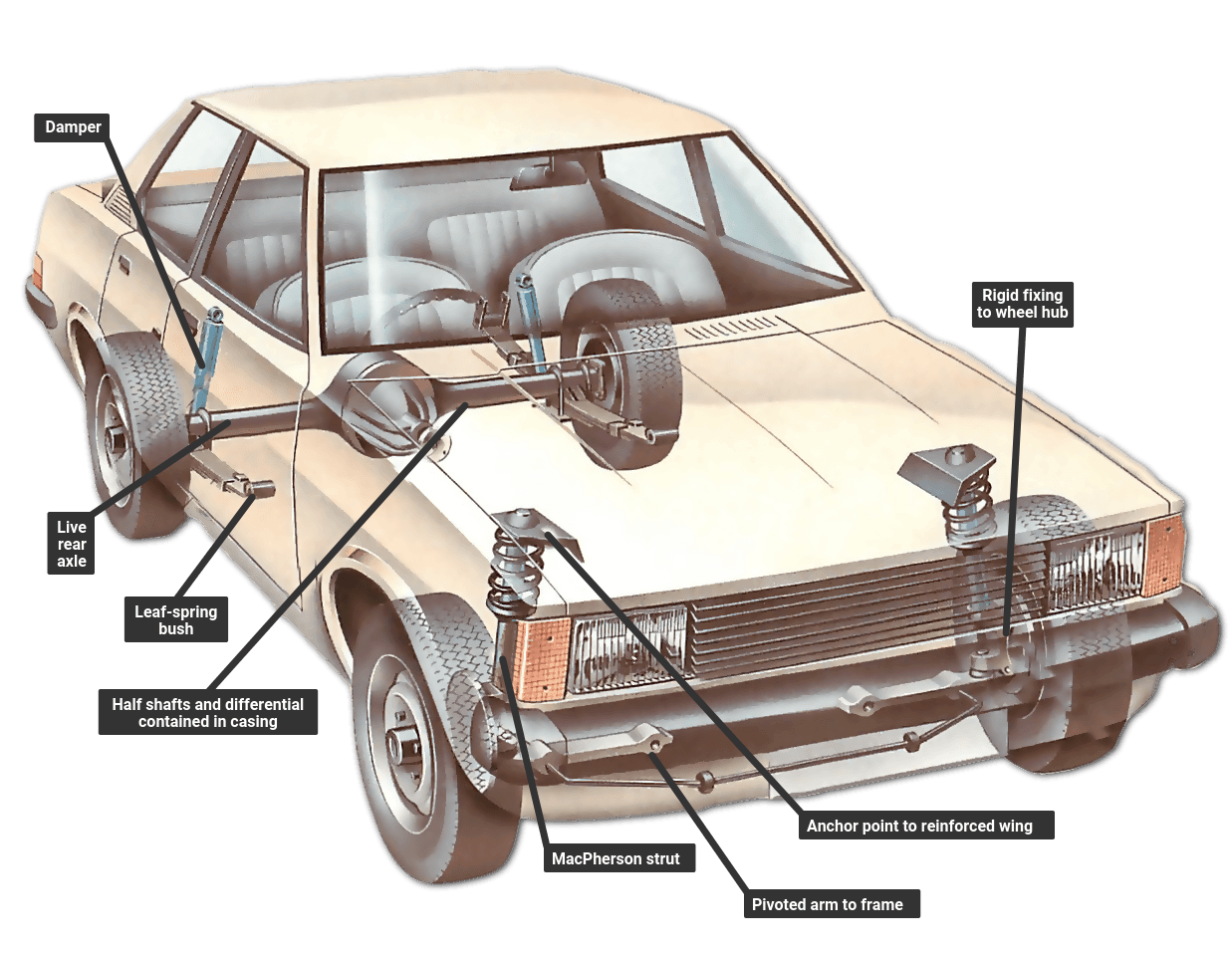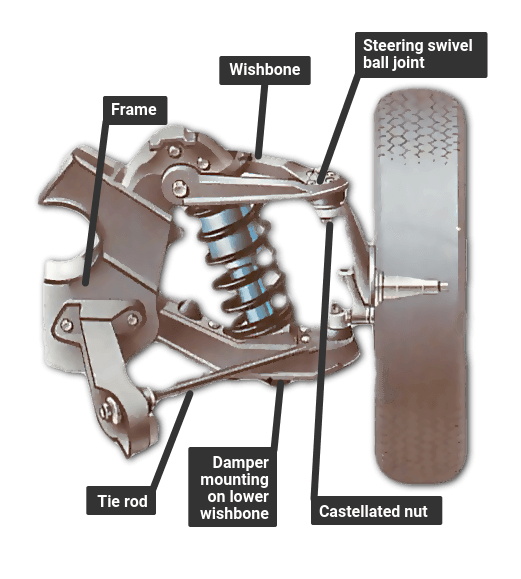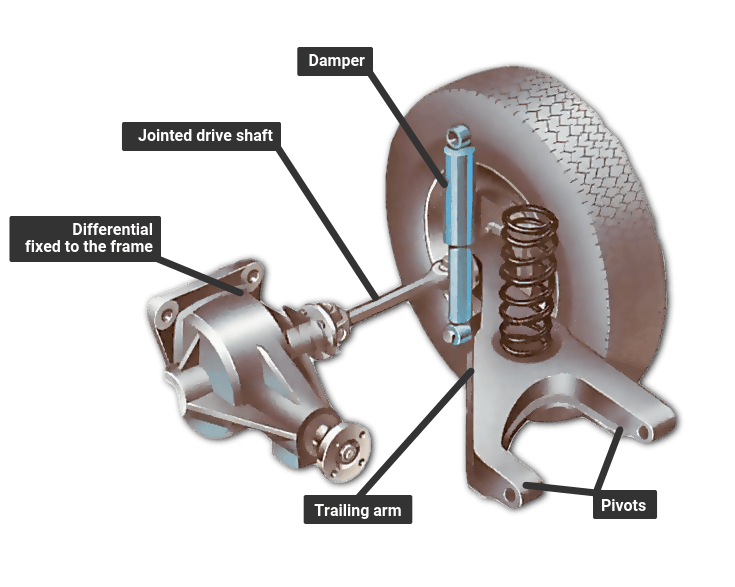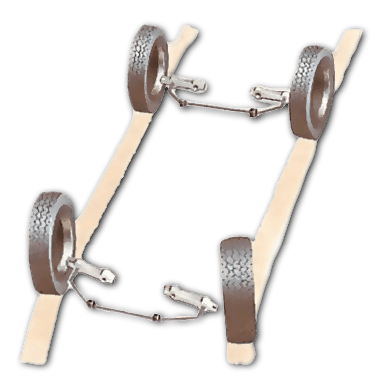How car suspension works
The Video Course teaches you everything about modern cars.

There are various ways of attaching the wheels of the car so that they can move up and down on their springs and dampers , and do so with as little change as possible in the distance between adjacent wheels or in the near-vertical angle of the tyres to the road.
The front wheels must be free to pivot on their steering swivels. The driven wheels, whether front or rear, must also be free to rotate with the drive shafts .
Non-independent suspension
A rear-wheel-drive car often has a live axle , a tube containing both the drive shafts (half shafts) and the differential gears . A four-wheel-drive car may have a live front axle as well.
A dead axle - a rigid beam - is now used at the front on vans and trucks only. Some front-wheel-drive cars have a dead rear axle.
A rigid axle will have springs and links to prevent sideways movement.
Independent suspension

Instead of sharing a common axle, each wheel on a car with independent suspension is independently attached to the body or subframe. Different spring combinations may be used.
When driven wheels are independently suspended, the differential is fixed to the frame and drives the wheels by jointed drive shafts.
There are five types of suspension system in common use.
Double wishbones are used mostly at the front. There are two wishbones, one above the other, to keep the wheel upright as it rises and falls.
MacPherson-strut suspension can be used at both front and rear. The wheel hub is fixed rigidly to an upright, telescopic, tubular strut which has its top end anchored to the frame or to a reinforced wing.
On front wheels, the whole strut swivels to allow steering. Pivoted arms extend inward and forward to the frame in order to keep the wheel upright and resist accelerating and braking forces .
A trailing arm is attached to the wheel hub at one end, and extends forward to a pivot on the frame.
The arm may be broadened into a V shape with two pivots, either side by side or with the inner pivot slightly behind the front one - a semi-trailing arm. Trailing arms are usually found at the rear only.

A leading arm , used only at the front, is the opposite of a trailing arm, with the wheel in front of the pivot.
Swing axles may be at the front or rear. The system is like a beam axle cut in half and attached to pivots on the frame.
Usually the half-axle is broadened into a V with front and rear pivots to keep it from twisting.
Anti-roll bars

To restrain cars from rolling - leaning over on corners - an anti-roll bar is used, often at the front, sometimes at the back and sometimes at both front and back.
It is a torsion bar crossing the car through two pivots on opposite sides of the frame.
Outside the pivots the bar bends back and one end is attached to each wheel, usually through one or two flexible rubber bushes.
When one wheel moves up it pulls up one end of the bar and the other end pulls up the other wheel, keeping the car level.
The Ultimate Car Mechanics video course
Learn everything about modern cars from our new video series.
Learn more >-
We build a Mazda MX5 Miata from scratch
We start by tearing down and then rebuilding the whole car.
-
Every part explained
There's ridiculous detail on every part. Clearly and easily explained.
-
All modeled in 3D
We've created the most detailed 3D model ever produced so we can show you everything working.






